Application of Water-Based Polyurethane in Sunscreen Products
Zhou Meng ,Sophia Sun,Li Bangbang,Shen Jixie,Ji Xueshun
Wanhua Chemical Group Co.,Ltd.,China
Abstract With the development of the economy and improving quality of life,sunscreen products have become an indispensable part of people’s daily lives.However,traditional sunscreen products have several shortcomings,such as sticky skin feel,clumping,and skin irritation.In addition,the price of sunscreen products is relatively high due to the expensive ingredient:UV absorbers.To solve the above problems,a film-forming agent had been added to the general sunscreen formula to synergistically improve the consumer experience without causing any adverse side effects.Ⅰt is crucial to achieve sun protection factors(SPF)booster through other cheaper agents.This article mainly studies and verifies the synergistic impact of Carfil? UV35(a water-based polyurethane product)in sunscreen products and discusses its application scope.The hen’s eggchorioallantoic membrane assay(HET-CAM)test and the human patch test were used to verify its mildness to the skin.Results also showed that Carfil? UV35 could effectively improve the water resistance of sunscreen products.What’s more,the SPF improvement test shows that only 5% Carfil? UV35 can increase the SPF value from 15 to 30.Ⅰn short,the research in this article can provide specific ideas for the formulation design of sunscreen products and is of great significance to the application and SPF increase of water-based polyurethane film-forming agents in sunscreen cosmetics.
Key words water-based polyurethane;sunscreen;SPF booster;Carfil? UV35
Nowadays,with the development of science and rising attention to healthy lifestyles,people have begun to pay more attention to skincare.At the same time,the harm of ultraviolet rays to the skin has attracted extensive attention with the destruction of the ozone layer.Therefore,protection from the sun is always one of the most critical themes in skincare.The key ingredients of sunscreen products are generally various sunscreen agents that can isolate or absorb ultraviolet rays,namely physical sunscreen agent,chemical sunscreen agent,and natural sunscreen agent.[1,2]Most of the sunscreen products on the market are formulated by mixing sunscreen agents.Regardless of the type of UV absorbers,if you want to achieve a better and long-lasting sunscreen effect,it must be uniformly attached to the skin surface with a certain thickness and can stay on the skin for a long time,especially in the case of friction or sweating.[3]
Adding too many UV absorbers to the formula will have a particular impact on the skin sensation of the product.[4]At the same time,some UV absorbers will also potentially irritate the skin,causing fragile skin to appear pore blockage,acne,or allergy problems.Sunscreen additives can help the UV absorbers adhere evenly to the skin surface.It can reduce the content of the main UV absorbers while achieving the same sunscreen effect.The unique properties of certain additives can further extend the effective time of the sunscreen products under different conditions of use,subsequently reducing the cost of the product formulation to a certain extent.
Commonly used sunscreen additives are macromolecular film formers,including waterbased film and oil-based film.[5]They can not only isolate the skin to a certain extent and reduce the skin irritation caused by the UV absorbers but can also combine with UV absorbers to assist the traction of UV absorbers in helping it spread evenly on the skin to achieve uniform film formation.Different types of sunscreen film formers can be selected according to sunscreen products’ different UV absorbers and formula characteristics.Compared with oilbased sunscreen film formers,sunscreen products with water-based film formers tend to be more environmentally friendly,milder,and less irritating to the skin.[6]This paper mainly studies the application performance of water-based polyurethane filmformer in sunscreen products,to provide ideas for the formula matching of sunscreen products.
1 Experimental section
1.1 Reagents and instruments
Polyuretheane-35(Carfil?UV35),WA6NHUA Chemical Group Co.,Ltd.;Isopropyl Myristate(CRODAMOL IPM),CRODA;Mineral Oil(26#),Hansen &Rosenthal Group Co.,Ltd.;Petrolatum(YINHUAN),HANGZHOUFUDA Fine Oil Products Co.,Ltd.;Glyceryl Stearat(A165),CRODA;PolyacrylamideGlycol Dimethacrylate(SEPIGEl 305),SEPPIC;Octocrylene(OCR,Neo Heliopan 303),SYMRISE;Avobenzone(BMDBM,1789),JADEWIN;EDTA-2Na,AKZONOBEL;Phenoxyethanol(PHENOXETHOL PE),BASF;Ethylhexyl Methoxycinnamate(SunsafeTMOMC),UNIPROMA;Ethylhexyl Salicylate(EHS,MFSORB 503),MFCI;De-ionized Water.
Water Bath Kettle(EWK-100),ASONE CORPORATION;Homogenizer(LBX?Model 2.5),PRIMIX CORPORATION;Stirrer(RW-20),IKA CORPORATION;Electronic Balance(SQP 5102-1CN),SARTORIUS GROUP CORPORATION.
1.2 Experiment
1.2.1 Sample preparation
The sunscreen formulations in Table 1 were used to test the effect of water-based polyurethane Carfil?UV35 on the performance of the sunscreen system.The formulations include three blank samples and two samples with Carfil?UV35.They were also used for irritation evaluation.
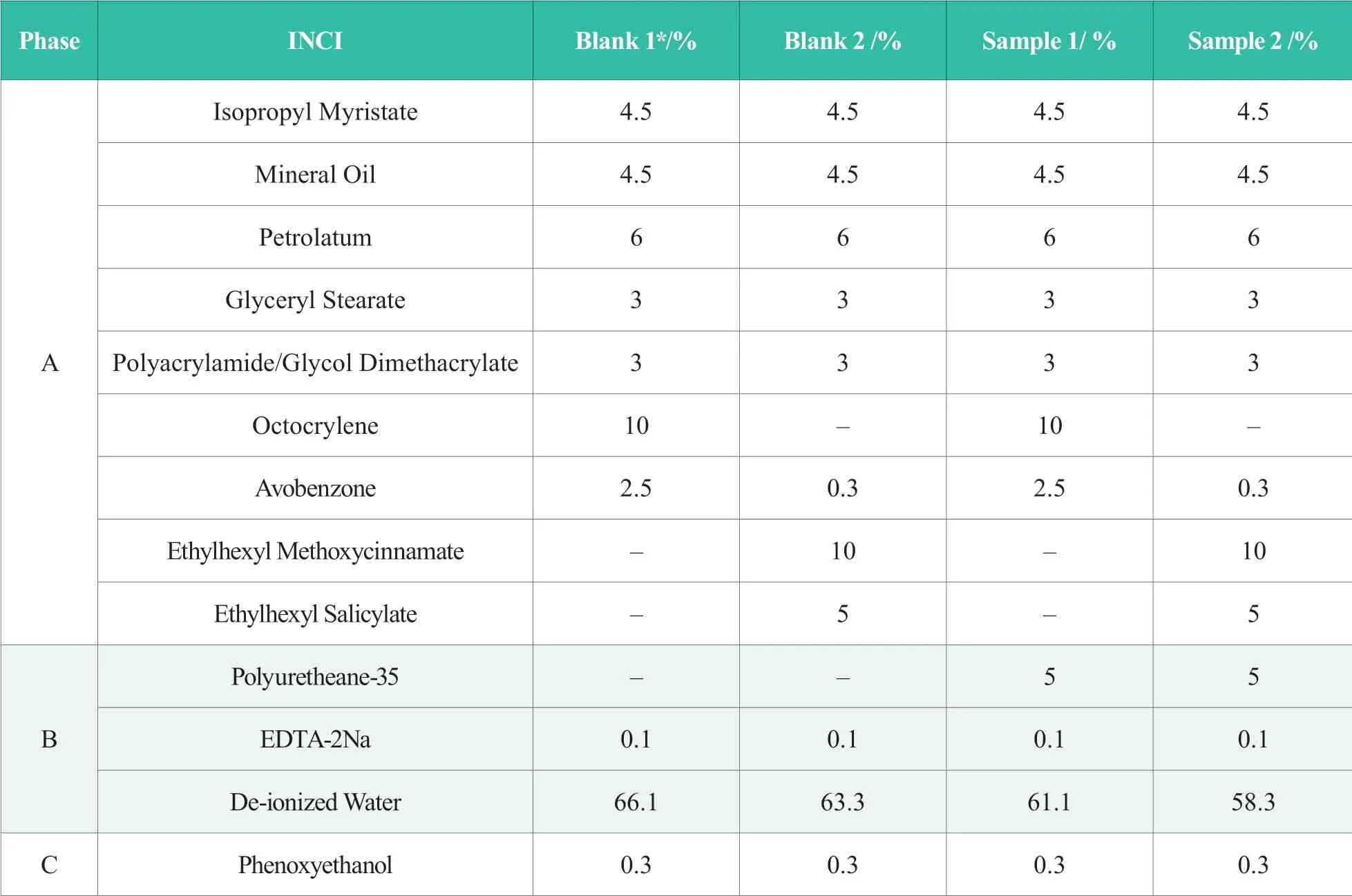
Table 1.Sunscreen formula
Sunscreen preparation:Sunscreen formulations were made using the following procedure.Phase A was prepared separately by heating it to 75~80 °C and stirred until uniform.Phase B was combined at room temperature and then heated to 70~75 °C with stirring.Phase A was slowly added to Phase B with homogenization at 70 °C.When the mixture appeared uniform,the heat was turned off,and sweep mixing continued throughout cool-down.Phase C was added with stirring at 45 °C.Finally,water was added to make up for the loss during heating and stirred until room temperature.
*The blank sunscreens were not contain Polyuretheane-35(Carfil?UV 35),and the sample sunscreens was on the contrary.
1.2.2 Irritation evaluation
1.2.2.1 HET-CMA test
According to SN/T2329-2009,[7]transparent water was chosen for observation.The concentration of the test substance was adjusted to 2%.According to the characteristics of the chorioallantoic vascular system,similar to the tissue structure of ocular conjunctiva in the middle stage of hatched chicken embryo,the stimulation response of allantoic membrane after exposure to the test substance was observed.The stimulation score was calculated to evaluate the test substance.Ⅰt is defined that ⅠS<1 is no irritation,1 ≤IS<5 is low irritation,5 ≤IS<9 is medium irritation,IS>9 is high irritation.
The test was carried out according to the following procedures.Firstly,fertilized chicken embryos were incubated in an incubator at 37.6 +0.5 ℃ and 50%~70% humidity for nine days.At the same time,negative control with 0.9% NaCl,positive control with 1% SLS,and test substance with 2%sunscreen were prepared.The negative control was defined as ⅠS = 0 and no irritation,while the positive control was defined as ⅠS = 10.3 and high irritation.Then the incubated chicken embryo was taken for egg irradiation.The eggshell was peeled off,and the white egg film was exposed.Finally,drop the test sample on the CAM surface,observe the reaction,and record the starting time of each toxic effect,including bleeding,vascular melting,and coagulation within 3 minutes.
1.2.2.2 Human skin patch test
According to Safety and Technical Standards for Cosmetics,Ministry of Health,PRC,2015 edition,[8]29 female subjects and 1 male subject were selected according to the inclusion and exclusion criteria,and all their data are exploitable.The age range of the thirty volunteers is from 22 to 51 years old.
The test was carried out according to the following procedure.0.020~0.025mL of the test material was put into the Finn chamber and applied on the forearm of the subjects under occlusive conditions.The patches were removed 24 hours after application.The dermatologist observed and graded the patch area at half an hour,24 hours,and 48 hours respectively after removal of the patch.In parallel,a negative control patch was also applied like the investigational product.The skin reaction grade form is shown in Table 2.
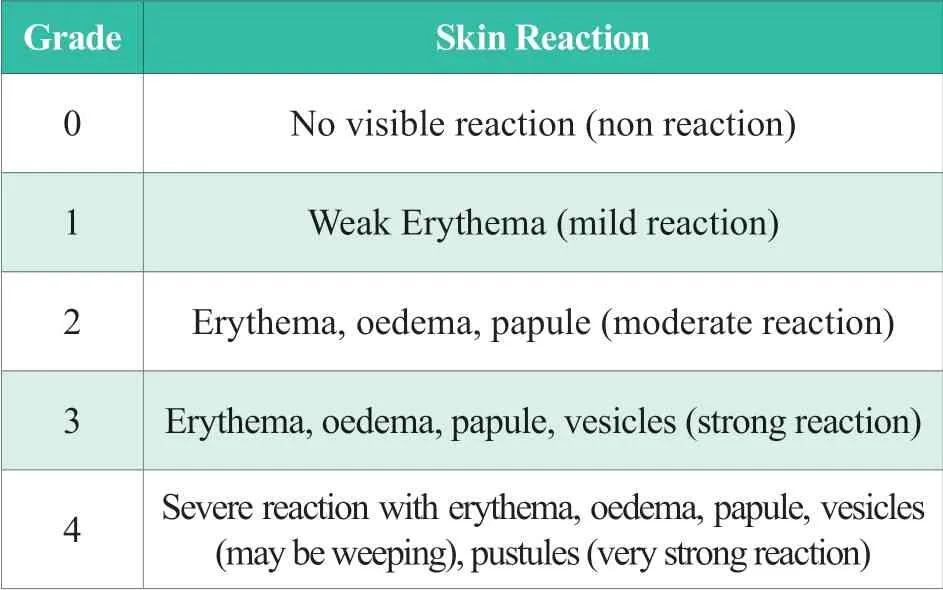
Table 2.Skin reaction grade form
1.2.3 Water resistance test
The method of water resistance test was based on the PMMA using the Optometrics SPF 290 to measure the SPF of the product on the skin before and after water immersion.The test was carried out according to the following procedures.A measured amount(50 mg)of the formulation was applied on PMMA.Samples were then placed at room temperature for 20 minutes.SPF was collected per board six times.One sample was tested three times.Samples were then immersed in a water bath(25± 3°C)for 80 minutes with constant mixing.After immersion,the samples were taken out of the water,lightly shaken to remove the largest water droplets,and hung in the air in a climate-controlled room at 50% relative humidity for 30 minutes.Afterward,SPF values were taken in the same manner as the initial ones.The percentage of water resistance was calculated as(AF / AI)x 100.AF was defined as final absorbance readings.AI was defined as initial absorbance readings.
1.2.4 Determination of SPF value
According to ISO24444:2010(E)Cosmetics - Sun protection test methods - In vivo determination of the sun protection factor(SPF),[9]ten healthy skin volunteer women aged 18~70 were selected for the test.The test area was around 30~60 cm2of human back skin.The undiluted sunscreen sample was used on the skin at the concentration of 2.00 ± 0.05 mg/cm2.MED(Minimal Erythema Dose)was determined 16~24 hours after irradiation by Xenon-Arc Solar Simulator.
To assess each volunteer's inherent reactivity to UV radiation,a minimum of five UV exposures were given to one test site area before the test.The irradiated sites were assessed for 16 to 24 hours after irradiation,and the MED for unprotected skin was determined.The MED is the shortest time of exposure that produces minimally perceptible erythema at 16 to 24 hours after irradiation and was used as an indicator for which to decide on the exposure times required in the main test.
The SPF value for the product and the standard were determined on a unique position on the back of each product.The evenness of the application was verified by observing through a Wood’s Lamp.For each 30~60 cm2of the test area,60~120 mg of the product or respectively standard were applied to give an application of 2.00±0.05 mg/cm2.After application,each substance was evenly spread over its test area,and a waiting period of 30 min and 240 min before exposure to UV radiation was required.
After the waiting period,the test sites were irradiated by a series of UV exposures,with each test site being exposed to different energy of irradiation.The actual exposure times were determined with reference to the individual's pretest MED for unprotected skin and to the expected SPF of the test material.More specifically,the MED for unprotected was multiplied by the expected SPF of the respective test material,giving a previously determined MED and the expected SPF.Each subject was instructed to return to the lab 16 to 24 hours after the exposure.Finally,treated skin areas were assessed 16~24 hours after irradiation by trained personnel.
2 Results and discussion
2.1 Irritation test
2.1.1 EHT-CAM test
To evaluate the irritation of Carfil?UV35 in sunscreen,two samples of Blank 1(without Carfil?UV35),and Sample 1(with 5% Carfil?UV35)were selected respectively.The EHT-CAM method was used to test their irritation.The structure of the picture observed under the microscope is shown in Figure 1.The addition of Carfil?UV35 in sunscreen formula cannot increasing irritation,which was reconfirm the safety of this raw material.

Figure 1.The results of EHT-CAM test
2.1.2 Human skin patch test of Carfil? UV35
In order to test the irritation of Carfil?UV35 more intuitively,a human patch test on a sunscreen sample containing 5% Carfil?UV35 was carried out.The test results are shown in Table 3.
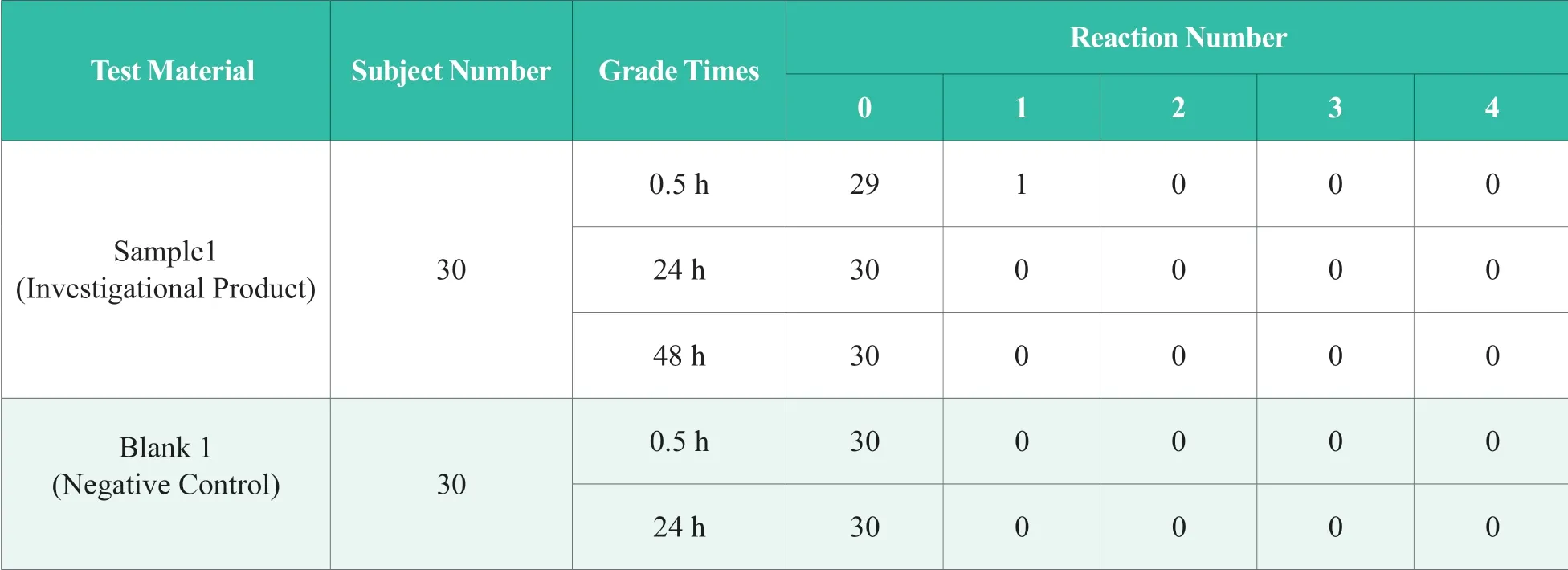
Table 3.The results of human skin patch test
The test results show that the addition of 5%Carfil?UV35 will not have a negative impact on the irritation of the sunscreen products.As an SPF-boosting additive,Carfil?UV35 is a safe and effective choice.
2.2 Water resistance
In addition,according to research,it is known that the water-based polyurethane film can be used in cosmetics to improve the water-resistance of the product.[10]In order to verify whether it is still waterproof when used in sunscreen products,an SPF tester was used to evaluate the waterproofness of the products with Carfil?UV35.
The UV absorption value of different products applied on PMMA before and after soaking in water was tested by an SPF meter.The test results are shown in Table 4.It is obvious that the UV absorption value of sunscreen products with 5% Carfil?UV35 added is basically unchanged after soaking three times in water,or even slightly higher,which shows that the addition of Carfil?UV35 can effectively increase the water-resistance of sunscreen and achieve long-term effectiveness.While the blank1 test result was blew 100% at first round No.1.
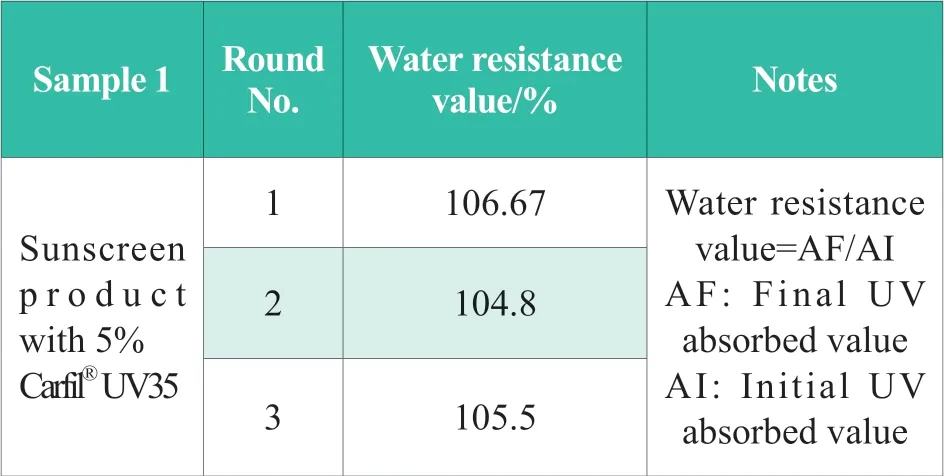
Table 4.The water resistance test result of sample 1(sunscreen with Carfil?UV35)
2.3 The effect of SPF improvement
The SPF values of the sunscreens prepared by Blank 1 and Sample 1 were tested.Sample 1 is blank 1 with 5% Carfil?UV35.The SPF data of these two kinds of sunscreen products after staying on the skin for 30 minutes and 240 minutes are shown in Figure 2.
It can be clearly observed from Figure2 that adding 5% of Carfil?UV35 to the blank formula can effectively increase the SPF value of the blank sunscreen product,that is,improve the sunscreen performance of the product.In this basic formula,the improvement effect of Carfil?UV35 on the SPF value can even be up to 100% after the products stay on the skin for 30 minutes.
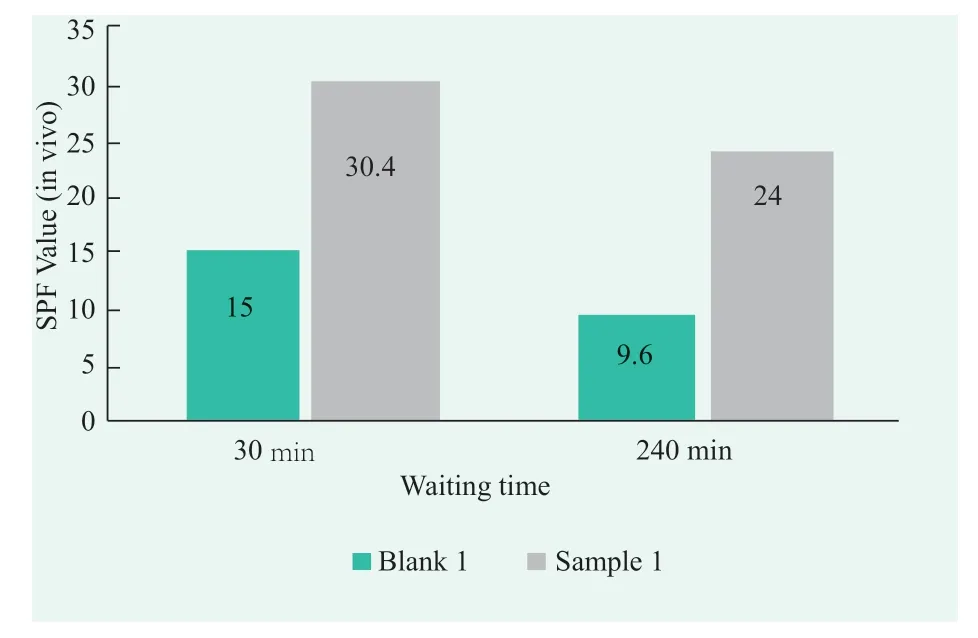
Figure 2.The SPF Improvement of Carfil? UV35 in Basic Sunscreen Formula
Ⅰt is obvious that the addition of Carfil? UV35 can increase the SPF value of the product without increasing irritation,but adding UV absorbers to increase the SPF value of the product will increase the irritation of the product and may also cause certain damages to the skin.In other words,the addition of film-forming additives can achieve the same effect without having to increase the use of UV absorbers,and it can also reduce the burden on the skin caused by sunscreen products.
Combining the excellent film-forming characteristics of Carfil?UV35,the water resistance of the sunscreen was well passed.Furtherly,the possible reason why Carfil?UV35 can improve the SPF value of the product to a certain extent is that the main component of Carfil? UV35 is polyurethane-35,which can combine with certain sunscreen components,[11]especially octocrylene(OCR)sunscreen.As shown in Figure 3,when a blank sunscreen without a film-forming agent is spread on the skin,there may be an uneven distribution of UV absorbers,resulting in parts of the skin being more vulnerable to sunburn and perhaps appearing erythema prematurely.After adding the film-forming agent,the molecules of the agent can combine with UV absorbers such as OCR.The UV absorbers can be pulled during the film-forming process and be evenly distributed in the network of the film.So the UV absorbers can be spread evenly on the skin,which can better absorb ultraviolet rays and prolong the time of appearing erythema.[12]Thus the final measured SPF value is higher.
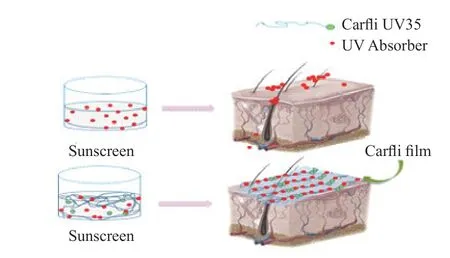
Figure 3.The mechanism of Carfil? UV35 in sunscreen
2.4 The limitation of application
According to the SPF test of Blank 2 and Sample 2(Blank 2+5%Carfil?UV35),it was found that Carfil?UV35(Water-based polyurethane-35)had limited effects on sunscreen products containing OMC and EHS.The test result is shown in Figure 4.
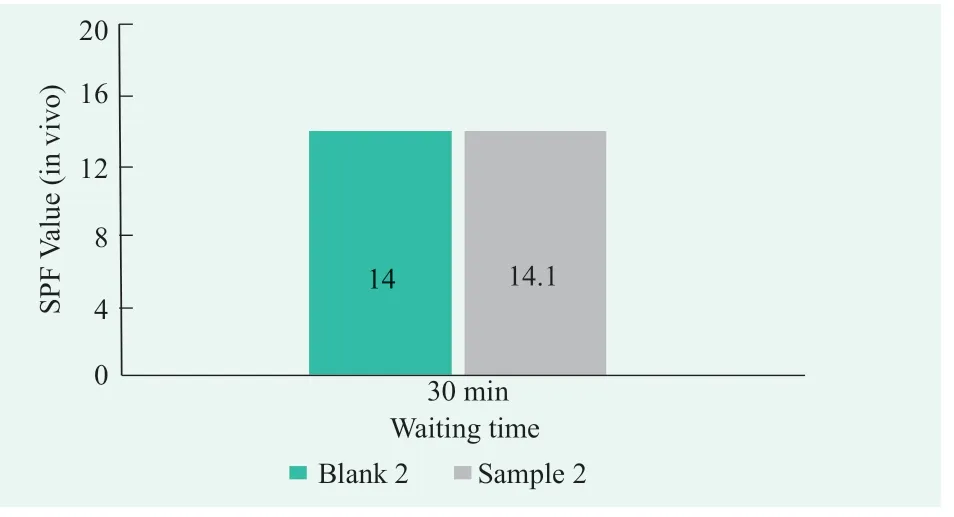
Figure 4.The SPF value of sunscreen without OMC/EHS
According to the synergistic mechanism of sunscreen film-forming agents,it may be because the molecules of polyurethane-35 and some UV absorbers such as OMC and EHS are structurally difficult to combine.These kinds of UV absorbers cannot be pulled to spread flat on the skin surface during the film-forming process,subsequently ineffective in increasing SPF value.However,the waterproofness of the polyurethane film can still make products containing such UV absorbers have a longer-lasting sunscreen effect in practical applications,especially experiencing friction or sweating.
3 Conclusion
Carfil?UV35(a water-based polyurethane film former)can significantly boost the sun protection effect of certain sunscreens to a certain extent and help maintain SPF value at a relatively high value.In addition,Carfil?UV35 has the characteristics of safety and mildness,which are shown in water-based resin.It can enhance the efficacy of UV absorbers while reducing skin irritation,compared with the traditional approach of introducing higher UV absorbers.Moreover,Carfil?UV35 can effectively provide water-resistance to sunscreen products and enhance long-lasting SPF value.This can increase the application scenarios of the product;even after sweating or contact with water,it can still retain better sun protection ability.
However,this water-based polyurethane also has certain limitations of application.It is mainly designed according to the special structure of some UV absorbers,which is difficult to meet all sunscreen products.But we can use the general properties such as waterproofness of Carfil?UV35 to design the sunscreen formula in practical applications.
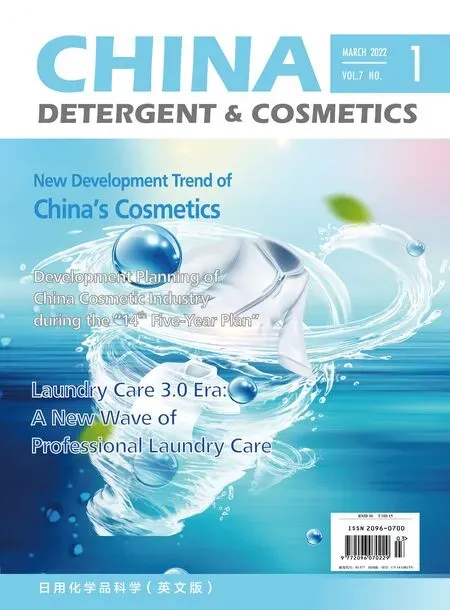 China Detergent & Cosmetics2022年1期
China Detergent & Cosmetics2022年1期
- China Detergent & Cosmetics的其它文章
- “R&D Competitions” of New Prominent Beauty Makeups
- Makeup Mirror Becoming the New Blue Ocean of Beauty Industry
- A Method for Determination of Critical Micellar Concentration of Surfactant
- Analysis and Comparison of Cleaning Power and Moisturizing Effect of Different Shower Gels
- Study on the Factors Affecting the Darkening of Liquid Foundations
- Experimental Method of Cosmetics Human Efficacy Evaluation Whitening
